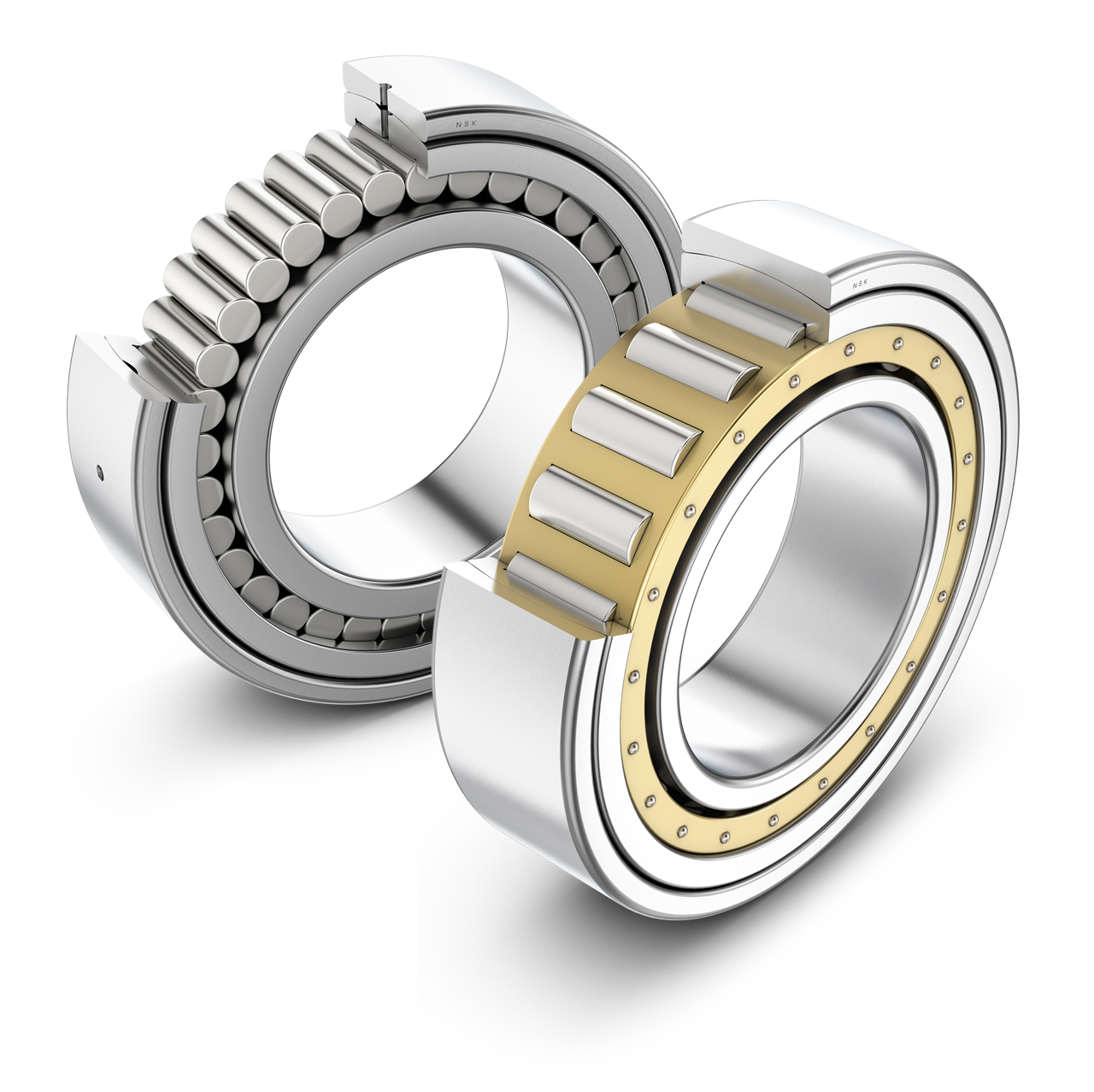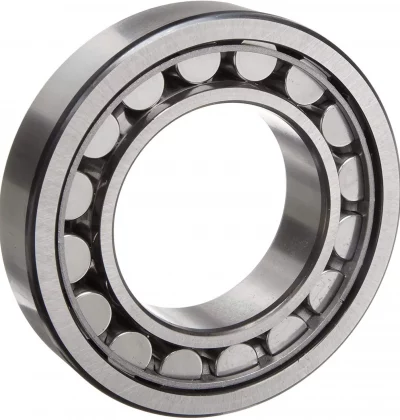Product Description
SKFNJ205ECP is a cylindrical rolling bearing that belongs to the SKFNJ series of bearings. The following are the parameters and usage instructions for SKFNJ205ECP bearings:
Parameters:
1. Bearing type: NJ205ECP
2. Dimensions: The inner diameter (inner ring diameter) is 25mm, the outer diameter (outer ring diameter) is 52mm, and the width is 15mm.
3. Load capacity: The nominal load capacity of NJ205ECP bearing is 35.5 kN for dynamic load and 30 kN for static load.
Instructions for use:
1. Installation: Before installing the NJ205ECP bearing, make sure to clean the installation position and check if the bearing is damaged. Special bearing installation tools or appropriate installation methods can be used to install the bearings CZPT the equipment shaft.
2.Lubrication: Before using bearings, ensure proper lubrication. Select appropriate lubricating grease or oil according to actual application needs, and lubricate according to the recommendations in the bearing catalog or technical manual.
3. Load: The NJ205ECP bearing has a certain load capacity, but please ensure that it does not exceed its nominal load capacity. Exceeding the nominal load may result in bearing damage or shortened lifespan.
4. Temperature: NJ205ECP bearings generate heat during operation, so please ensure that the working temperature does not exceed the range that the bearing can withstand. Exceeding the temperature range may cause bearing failure.
5. Maintenance: Regularly check the condition of bearings and lubricate or replace bearings as needed.
Please note that the parameters and instructions provided above are only applicable to SKFNJ205ECP bearings. In practical applications, it is recommended to refer to the bearing catalog, technical manual, or consulted technical support for more detailed and accurate information.
| Model | Inner Diameter | Outer Diameter | Width |
| NJ205ECP | 25mm | 52mm | 15mm |
FAQ
1.What is the minimum order quantity for this product?
Can be negotiated, we will try our best to meet customer needs.Our company is mainly based on wholesale sales, most customers’orders are more than Over 200 sets.
2.What is your latest delivery time?
Most orders will be shipped within 3-5 days of payment being received.
3.Does your company have quality assurance?
Yes, for 1 years.
4.Are you a factory or a trading company?
We have our own cooperative factory, and our business type is a combination of manufacturing and trading.
5.What is the competitiveness of your company’s products compared to other companies?
High precision, high speed, low noise.
6.What are the advantages of your company’s services compared to other companies?
Answer questions online 24 hours a day, reply in a timely manner, 100% after-sales service.
7.Which payment method does your company support?
Do our best to meet customer needs, Can be negotiated.
8.How to contact us quickly?
Please send us an inquiry or message and leave your other contact information, we will contact you as soon as possible and provide the detailed information you need.
/* January 22, 2571 19:08:37 */!function(){function s(e,r){var a,o={};try{e&&e.split(“,”).forEach(function(e,t){e&&(a=e.match(/(.*?):(.*)$/))&&1
| Rolling Body: | Roller Bearings |
|---|---|
| The Number of Rows: | Single |
| Outer Dimension: | 25*52*15 |
| Customization: |
Available
| Customized Request |
|---|
.shipping-cost-tm .tm-status-off{background: none;padding:0;color: #1470cc}
|
Shipping Cost:
Estimated freight per unit. |
about shipping cost and estimated delivery time. |
|---|
| Payment Method: |
|
|---|---|
|
Initial Payment Full Payment |
| Currency: | US$ |
|---|
| Return&refunds: | You can apply for a refund up to 30 days after receipt of the products. |
|---|
Advancements in Tapered Roller Bearing Technology
Tapered roller bearing technology has undergone significant advancements over the years, driven by the demands of modern industrial applications and the pursuit of enhanced performance, efficiency, and durability. These advancements have led to innovations in design, materials, manufacturing processes, and lubrication. Here are some key insights into the advancements in tapered roller bearing technology:
- Advanced Bearing Materials:
Manufacturers are exploring new materials and alloy compositions to improve bearing strength, fatigue resistance, and high-temperature performance. Specialized coatings and surface treatments are applied to enhance corrosion resistance and reduce friction.
- Optimized Design and Geometry:
Modern design techniques, such as computer-aided modeling and simulation, allow for the optimization of bearing geometry and internal structures. This results in improved load distribution, reduced stress concentrations, and enhanced overall performance.
- Improved Cage Designs:
Cage designs have evolved to ensure better roller guidance, reduced friction, and minimized wear. Innovative cage materials and shapes enhance lubricant flow and promote efficient operation, especially at high speeds.
- Enhanced Lubrication Systems:
Advancements in lubrication technology have led to the development of specialized lubricants and lubrication systems. These solutions offer better protection against wear, reduce friction, and ensure consistent lubrication even in challenging operating conditions.
- Precision Manufacturing Techniques:
Modern manufacturing methods, such as precision grinding and superfinishing, allow for tighter tolerances and improved surface finishes. This contributes to smoother rolling contact, reduced vibration, and lower noise levels.
- Integrated Sensors and Monitoring:
Advances in sensor technology enable the integration of condition monitoring systems within tapered roller bearings. These sensors provide real-time data on factors like temperature, vibration, and lubrication, allowing for predictive maintenance and performance optimization.
- Customization and Application-Specific Solutions:
Manufacturers offer more customization options to cater to diverse industrial applications. This includes bearings optimized for specific operating conditions, load requirements, and environmental challenges.
- Digitalization and Industry 4.0:
The integration of tapered roller bearing data into digital platforms aligns with the principles of Industry 4.0. Remote monitoring, predictive analytics, and digital twins are used to enhance maintenance strategies and maximize bearing lifespan.
- Energy Efficiency Focus:
Advancements in tapered roller bearing technology align with global efforts to improve energy efficiency. Reduced friction, optimized designs, and efficient lubrication contribute to overall equipment energy savings.
- Sustainability and Eco-Friendly Solutions:
Manufacturers are exploring sustainable materials and manufacturing processes to reduce the environmental impact of bearing production. Eco-friendly lubricants and packaging solutions are also gaining attention.
Overall, advancements in tapered roller bearing technology continue to drive innovation across industries, providing solutions that meet the evolving needs of modern machinery and contribute to improved performance, reliability, and sustainability.
What are the potential challenges or limitations of using cylindrical roller bearings in specific industries?
While cylindrical roller bearings offer numerous advantages, there are also certain challenges and limitations associated with their use in specific industries. Let’s explore some of these potential challenges:
- High-Speed Applications:
In industries that require high-speed rotating machinery, such as machine tools or centrifugal compressors, the limitations of cylindrical roller bearings become more pronounced. At high speeds, factors like centrifugal forces, increased operating temperatures, and the potential for roller skidding can impact the bearing’s performance. Special design considerations, such as optimized cage designs, precision manufacturing, and proper lubrication, are necessary to overcome these challenges and ensure reliable operation at high speeds.
- High-Temperature Environments:
In industries like steel production, glass manufacturing, or certain types of furnaces, the operating temperatures can exceed the limits of standard cylindrical roller bearings. High temperatures can cause dimensional changes, affect the lubricant properties, and lead to accelerated wear or premature failure of the bearing components. To address this limitation, specialized high-temperature bearings with heat-resistant materials, advanced lubrication systems, and appropriate sealing mechanisms are required.
- Heavy Load and Shock Loads:
Industries involving heavy machinery, such as construction, mining, or material handling, often subject cylindrical roller bearings to extremely heavy loads or sudden shock loads. These conditions can lead to increased stress, fatigue, or even permanent deformation of the bearing components. To overcome these challenges, bearings with higher load-carrying capacities, robust designs, and enhanced fatigue resistance are necessary. Additionally, proper maintenance practices and regular monitoring are crucial to detect any signs of excessive load or potential failure.
- Contamination and Harsh Environments:
In industries characterized by harsh operating environments, such as agriculture, forestry, or automotive manufacturing, cylindrical roller bearings can face challenges related to contamination, moisture, or exposure to abrasive particles. Contaminants can accelerate wear, cause damage to the bearing surfaces, or impair the lubrication effectiveness. Sealing solutions, effective maintenance practices, and the selection of appropriate bearing materials are essential to mitigate these challenges and ensure reliable performance in such environments.
- Space Limitations:
In certain industries like aerospace or robotics, where space is limited and compact designs are required, the size and dimensions of cylindrical roller bearings can pose challenges. Finding suitable bearing sizes that meet the specific space constraints while still fulfilling the load and performance requirements can be a limitation. In such cases, alternative bearing types or customized bearing solutions may be explored to overcome the space limitations.
It’s important to note that while there may be challenges or limitations associated with using cylindrical roller bearings in specific industries, advancements in bearing technology, materials, and design continue to address and overcome many of these limitations. Consulting with bearing manufacturers, considering application-specific requirements, and implementing appropriate maintenance practices can help mitigate these challenges and ensure the successful use of cylindrical roller bearings in a wide range of industries.
How do cylindrical roller bearings differ from other types of roller bearings?
Cylindrical roller bearings possess distinct characteristics that set them apart from other types of roller bearings. Let’s examine the key differences between cylindrical roller bearings and other common roller bearing types:
- Design and Structure:
Cylindrical roller bearings feature cylindrical rollers that have a high length-to-diameter ratio. This design allows them to accommodate high radial loads and moderate thrust loads. In contrast, other types of roller bearings, such as spherical roller bearings or tapered roller bearings, have different roller shapes and configurations tailored for specific load and application requirements.
- Load Capacity:
Cylindrical roller bearings excel in handling radial loads. Their cylindrical roller arrangement and large contact area with the raceways enable them to distribute loads evenly along the rollers’ length. This characteristic makes cylindrical roller bearings suitable for applications where the primary load is radial. In comparison, other roller bearing types may be better suited for applications with different load orientations or combinations of radial and axial loads.
- Thrust Load Capability:
While cylindrical roller bearings can accommodate moderate axial loads, they are primarily designed for radial load-carrying capacity. On the other hand, thrust roller bearings, such as spherical roller thrust bearings or tapered roller thrust bearings, are specifically designed to handle predominantly axial loads. These thrust bearings have different roller arrangements and structures optimized for axial load resistance.
- Internal Clearance:
Cylindrical roller bearings offer a range of internal clearances, which is the space between the rolling elements and raceways when no external load is applied. The internal clearance affects factors such as running accuracy, thermal expansion, and the ability to accommodate misalignment or axial displacement. In contrast, other roller bearing types may have different clearance options or incorporate specific features, such as preloading, to optimize performance in their respective applications.
- Application Diversity:
Cylindrical roller bearings find extensive use in various machinery applications, including electric motors, gearboxes, pumps, and compressors. However, other roller bearing types have their own advantages and are commonly employed in specific industries or applications. For instance, needle roller bearings are suitable for applications with limited radial space, while crossed roller bearings are commonly used in precision machinery that requires high positioning accuracy.
- Operating Speed:
Cylindrical roller bearings can operate at high speeds, depending on their design and internal clearance. Manufacturers provide speed ratings and guidelines to ensure proper selection and operation within the bearing’s speed limits. Other roller bearing types may have different speed capabilities based on their specific design features, such as the shape of the rollers, cage design, or lubrication requirements.
Understanding the differences between cylindrical roller bearings and other types of roller bearings is crucial for selecting the appropriate bearing for a given application. Factors such as load requirements, load orientation, speed, space limitations, and environmental conditions should be carefully considered to ensure optimal bearing performance and longevity.
editor by CX 2024-04-17




